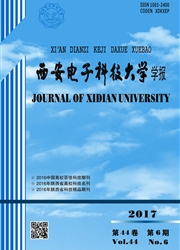

 中文摘要:
中文摘要:
提出了一种基于物理的4H—SiC n—MOSFET反型层迁移率模型.基于第一性原理的准二维库仑散射迁移率模型考虑了载流子屏蔽效应和温度对库仑散射的影响,模型中不包含任何经验参数,可方便地应用于二维器件模拟软件.推导出SiC表面粗糙散射迁移率模型的参数与界面粗糙度之间的数值关系.模拟结果表明:库仑散射机制主要在近表面处起作用;随着栅电压增大,表面粗糙散射所起的作用逐渐显著;较高掺杂的SiC MOSFET表面粗糙散射成为限制反型层迁移率的最主要散射机制.
 英文摘要:
英文摘要:
An inversion channel electron mobility model of the 4H-SiC n-MOSFET is presented according to the physical mechanism. The quasi-2D Coulomb scattering mobility model based on the first principles takes account of the screening effect by carriers and temperature on Coulomb scattering, in which no empirical parameters are included. This can be directly embedded into the 2-D device simulator. The numerical relationship between the proportionality constant of the surface roughness scattering mobility model and the surface roughness degree is deduced. Correctness of the model is confirmed by comparison between simulated and experimental results. The simulated results show that Coulomb scattering plays a dominant role near the interface. Surface roughness scattering becomes more obvious at a higher gate voltage and it is the dominant scattering mechanism to limit the mobility in the inversion layer for the higher doped SiC MOSFET.
 同期刊论文项目
同期刊论文项目
 同项目期刊论文
同项目期刊论文
 Study of the effect of lithography deviation on 4H-SiC floating junction junction barrier Schottky d
Study of the effect of lithography deviation on 4H-SiC floating junction junction barrier Schottky d Investigation of a 4H-SiC metal-insulation-semiconductor structure with an Al2O3/SiO2 stacked dielec
Investigation of a 4H-SiC metal-insulation-semiconductor structure with an Al2O3/SiO2 stacked dielec SiC epitaxial layers grown by chemical vapour deposition and the fabrication of Schottky barrier dio
SiC epitaxial layers grown by chemical vapour deposition and the fabrication of Schottky barrier dio 期刊信息
期刊信息
